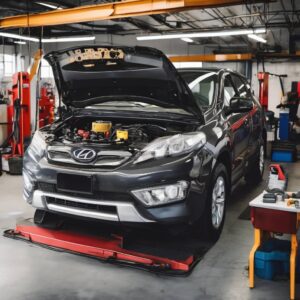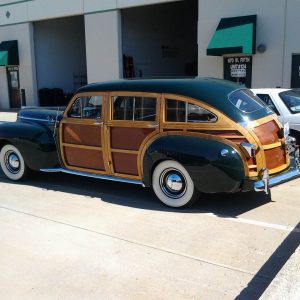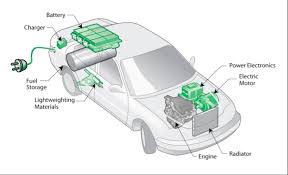How Serious Is a Grinding Wheel Bearing?
A grinding noise coming from your car’s wheel area is never a good sign—and often, it’s a clear indicator of a failing wheel bearing. While it might start off as a subtle hum or rumble, it can quickly escalate into a serious mechanical issue if left unchecked. But how serious is a grinding wheel bearing, really?
In this article, we’ll dive into:
- What a wheel bearing is and how it works
- Signs of a bad wheel bearing
- Why a grinding noise is a red flag
- The risks of ignoring the problem
- How it’s diagnosed and fixed
- What you should do if you suspect a wheel bearing issue
What Is a Wheel Bearing?
A wheel bearing is a small but essential component located within the wheel hub. It’s a set of steel balls or rollers held together by a metal ring (the race), and its job is to allow your wheels to rotate smoothly with minimal friction. Every wheel on your car has a bearing that supports the wheel’s rotation while withstanding the weight of the vehicle and absorbing impacts from driving.
Wheel bearings are sealed and lubricated for life in most modern vehicles, but over time, they can wear out due to age, stress, water intrusion, or damage.
What Does a Grinding Noise Mean?
A grinding noise from your wheel area is one of the most noticeable symptoms of a failing wheel bearing. It often sounds like metal rubbing against metal and can get louder as you accelerate, turn, or load one side of the vehicle more than the other.
What Causes the Grinding?
- As the bearing loses lubrication or becomes damaged, the metal components inside begin to wear and grind against each other.
- The noise can also come from excessive play in the hub, causing misalignment and contact between parts that shouldn’t be touching.
How Serious Is a Grinding Wheel Bearing?
🔴 Very Serious. Here’s Why:
1. Safety Hazard
A failing wheel bearing can affect your vehicle’s ability to handle properly. In extreme cases, it can cause the wheel to wobble or separate from the axle, leading to a total loss of control.
2. Compromised Braking
Wheel bearings are part of the hub assembly, which also supports the brake rotor and caliper. A loose or damaged bearing can lead to:
- Inconsistent braking
- Increased stopping distances
- Brake pad wear due to misalignment
3. Tire and Suspension Damage
If the wheel bearing allows excess movement, it can throw off your wheel alignment, putting extra stress on tires and suspension components. This leads to:
- Uneven tire wear
- Premature tire replacement
- Damage to struts, shocks, and control arms
4. Risk of Total Wheel Failure
Though rare, a completely failed wheel bearing can seize up or break apart. This could result in the wheel locking up or detaching from the vehicle while driving—posing a catastrophic risk.
Signs of a Bad Wheel Bearing
If you hear a grinding noise while driving, especially from one corner of your car, it’s time to check for these additional symptoms:
- Grinding or growling noise that gets louder with speed
- Humming or rumbling that changes when turning or shifting weight
- Vibration in the steering wheel or seat
- Uneven tire wear
- ABS warning light (in vehicles with wheel speed sensors integrated into the bearing)
- Wheel wobble or excessive play when shaken by hand
How Long Can You Drive with a Grinding Wheel Bearing?
It’s strongly advised not to drive at all once you hear grinding from a wheel bearing. While you may be able to drive short distances initially, continued driving will accelerate wear, increase the risk of failure, and likely lead to much more expensive repairs.
How Is a Failing Wheel Bearing Diagnosed?
1. Road Test
A technician will test-drive the vehicle and listen for telltale noises that change with speed or direction.
2. Physical Inspection
- With the car lifted, each wheel is checked for excess play by wiggling it at the 12 and 6 o’clock positions.
- Spinning the wheel by hand can also reveal roughness or grinding.
3. Stethoscope or Chassis Ears
Mechanics may use tools to pinpoint the sound more precisely to a specific wheel.
How Is a Wheel Bearing Fixed?
🔧 The Fix: Wheel Bearing Replacement
- The damaged bearing must be pressed out and replaced with a new one.
- In some vehicles, the wheel bearing is integrated with the hub assembly, which makes replacement easier but costlier (as the whole hub must be replaced).
Typical Costs:
- Parts and labor combined: $250–$500 per wheel (depending on vehicle type)
- Luxury or all-wheel-drive vehicles may be more expensive due to complexity
How to Prevent Wheel Bearing Damage
While wheel bearings do wear out over time, you can extend their life by:
✔ Avoiding potholes and rough terrain
✔ Not overloading your vehicle
✔ Keeping tires properly inflated
✔ Ensuring proper wheel alignment
✔ Replacing worn suspension components promptly
Also, after driving through deep water or flood zones, have your vehicle inspected—water intrusion is a common cause of premature bearing failure.
Conclusion
A grinding wheel bearing isn’t just an annoying noise—it’s a warning sign of a potentially dangerous mechanical failure. Ignoring it can lead to serious safety risks, costly damage to other parts, and even the loss of a wheel while driving.
If you suspect a wheel bearing is failing, schedule a professional inspection immediately. Prompt repair not only keeps you safe but also saves you money by preventing further damage. In the world of auto repair, this is one issue where early action truly pays off. 🚗🛠️
Hear grinding from your wheels? Don’t guess—get it checked today!





